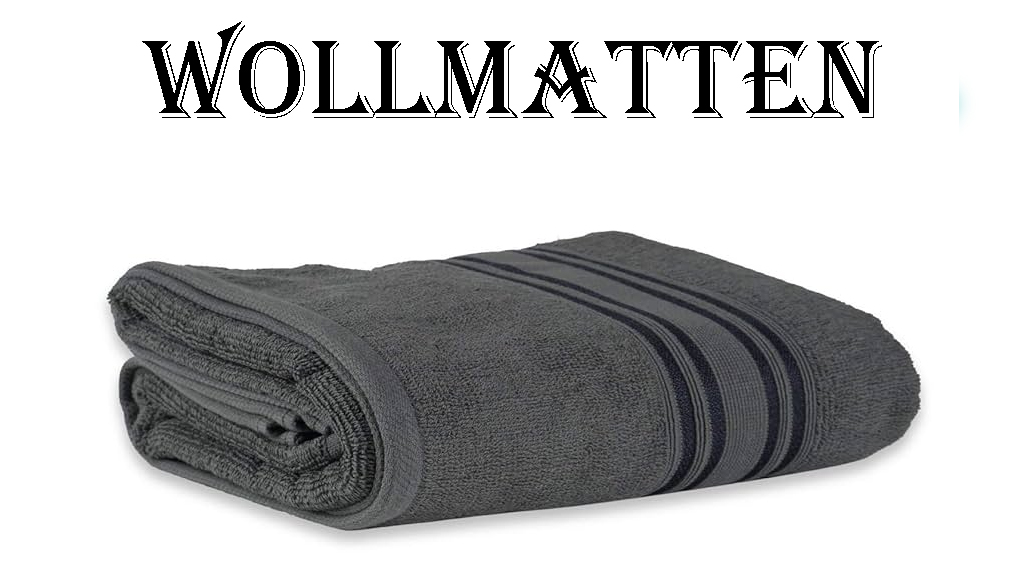Wool has been a part of human life for centuries, offering warmth, comfort, and versatility in countless forms. Among its many applications, wollmatten—or wool mats—stand out as one of the most enduring and practical uses of this natural material. From traditional households to modern eco-friendly interiors, these mats combine functionality with elegance. This article explores the history, benefits, production, and modern applications of wollmatten while highlighting their importance in today’s sustainable living practices.
What Are Wollmatten?
Wollmatten are mats or carpets primarily crafted from wool. Unlike synthetic alternatives, these mats provide natural insulation, durability, and comfort. They come in various shapes and sizes, ranging from small doormats to large decorative floor coverings. Because wool is both soft and resilient, wollmatten are prized in homes, offices, and even commercial spaces where comfort and style matter.
The History of Wollmatten
Wool mats have deep cultural roots. Historically, communities across Europe, Asia, and the Middle East relied on sheep wool to produce textiles, rugs, and protective coverings. In colder regions, wollmatten were essential for keeping households warm and insulated from icy floors. Over time, their role expanded beyond practicality to include artistry, with intricate patterns and handwoven designs becoming symbols of cultural identity.
Today, while industrial production has made wollmatten widely accessible, handcrafted varieties still hold immense value for their uniqueness and traditional craftsmanship.
Why Choose Wollmatten?
Durability and Longevity
Wool fibers have natural elasticity, allowing mats to retain their shape even after years of use. Wollmatten are less prone to flattening compared to synthetic mats, making them a worthwhile long-term investment.
Comfort and Warmth
One of the most significant advantages of wool is its natural insulation. Wollmatten create a cozy environment by keeping feet warm in winter and surprisingly cool in summer.
Eco-Friendly and Sustainable
Unlike synthetic mats made from petroleum-based materials, wollmatten are biodegradable and renewable. Wool production has a smaller environmental footprint, especially when sourced ethically.
Aesthetic Appeal
Wollmatten come in neutral tones as well as vibrant patterns, making them suitable for minimalistic interiors or traditional, colorful settings.
Health Benefits
Wool is naturally hypoallergenic, resistant to dust mites, and helps regulate humidity indoors, contributing to better air quality.
Types of Wollmatten
There are several variations of wollmatten, each designed for specific purposes:
-
Doormats: Compact and sturdy, these keep dirt and moisture out while adding a rustic touch to entrances.
-
Rugs and Carpets: Large wollmatten used in living rooms or bedrooms to enhance comfort and style.
-
Yoga and Meditation Mats: Popular in wellness communities, wool mats offer a natural alternative to synthetic foam mats.
-
Decorative Pieces: Some wollmatten are designed with traditional patterns, serving both functional and ornamental purposes.
Production Process of Wollmatten
The creation of wollmatten involves several meticulous steps:
-
Shearing: Wool is collected from sheep, usually once a year.
-
Cleaning and Carding: The raw wool undergoes washing to remove dirt, then carding to align fibers.
-
Spinning: Fibers are spun into yarn, which determines the mat’s texture and durability.
-
Weaving or Felting: Depending on the design, wollmtten can be woven, tufted, or felted into their final form.
-
Finishing Touches: Mats are dyed, patterned, or bordered to suit aesthetic preferences.
Traditional handwoven wollmaten often carry cultural significance, while modern production allows for affordable, everyday use.
Wollmatten in Interior Design
In contemporary design, wollatten play a dual role: aesthetics and function. Interior designers often recommend them to add warmth and character to spaces. A wool mat in a living room can soften the atmosphere, while a patterned one in a hallway can act as a statement piece.
Because of their versatility, wollmtten fit seamlessly in modern minimalistic spaces, rustic homes, and even luxurious interiors. Neutral-colored mats complement Scandinavian styles, while richly patterned versions are popular in bohemian or traditional décor.
Sustainability and Wollmatten
As the world shifts towards eco-conscious living, wllmatten stand out as a sustainable choice. Wool is renewable, with sheep producing fleece annually. Additionally, the biodegradability of wool ensures that mats do not contribute to long-term waste in landfills.
Compared to synthetic mats, which can take hundreds of years to decompose, wollatten naturally return to the earth without harming the environment. This makes them an ideal choice for individuals seeking eco-friendly lifestyle solutions.
Caring for Wollmatten
To maintain the beauty and longevity of wool mats, proper care is essential:
-
Regular Vacuuming: Keeps dust and debris at bay.
-
Spot Cleaning: Use mild soap and water for small stains.
-
Professional Cleaning: Recommended for larger mats every 12–18 months.
-
Avoid Excess Moisture: Wool is naturally resistant to moisture, but prolonged dampness can damage fibers.
With proper maintenance, wollmaten can last decades, retaining their texture and appeal.
Wollmatten Beyond the Home
While most commonly used in households, wollmtten have found applications in other areas as well:
-
Offices and Workspaces: Adding warmth to modern corporate interiors.
-
Hospitality Industry: Hotels and resorts use wolmatten for their blend of elegance and durability.
-
Wellness Studios: Preferred for yoga, meditation, and relaxation due to their comfort and eco-friendliness.
The Future of Wollmatten
With growing demand for natural and sustainable products, wolmatten are poised for continued relevance. Innovations in design and production are making thee mats more accessible and customizable. As consumer awareness of environmental impact increases, wollmtten will likely become even more popular as eco-friendly lifestyle choices gain momentum.
Conclusion
Wollmatten are more than just floor coverings; they are symbols of tradition, sustainability, and comfort. From their historical roots to their modern applications, these mats continue to hold a special place in homes and lifestyles worldwide. By choosing wollmaten, individuals not only enhance their living spaces but also contribute to sustainable and eco-conscious living.
Whether used as decorative accents, cozy essentials, or sustainable alternatives, wollatten embody timeless elegance and practicality—making them a worthy investment for generations to come.

